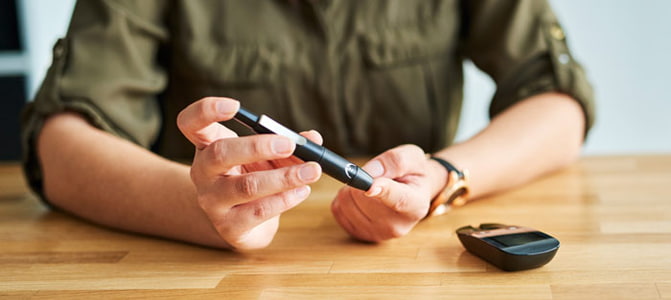
DIABETES … A LIFE STYLE DISEASE
- Dr Kumar
- August 23, 2022

DIABETES … A LIFE STYLE DISEASE
REVERSE YOUR DIABETES IN 21 DAYS
Diabetes is a global issue. If you look around and observe, you will find that most common aliments both physical and psychological are a result of leading a wrong life style. Life style diseases are defined as diseases are linked with the way people live their life. Diabetes is also an out come of leading a wrong life style. Around 90% people with diabetes have type II diabetes.
Diabetes mellitus is group of metabolic disease chaterized by high blood glucose level, disturbance of carbohydrate, fat and protein metabolism resulting from defects in insulin secretion or both.
India, home to the second largest number of diabetes cases. Diabetes is India’s fastest growing disease.
DIABETES MANAGEMENT:
Diabetes can be prevented by adopting a healthy lifestyle. Much can be done to improve the quality of life, increase physical activity, and reduce morbidity and mortality in People living with diabetes. The researchers wrote that people with diabetes should receive individualized medical nutrition therapy, preferably from a nutritionist / dietician. Diets should feature healthy eating patterns containing nutritious foods.
The Standards of Care now groups lifestyle management into a new section that focuses on:
- Nutrition therapy;
- Physical activity;
- Smoking cessation counselling;
- Psychosocial care;
- Diabetes self-management education; and
- Diabetes self-management support.
FOOD CHOICE AND TRAFFIC SIGNAL SYSTEM:
| RED ZONE: | These foods are rich in fat and in refined carbohydrate or sugar; they have a high glycemic index or are low in fiber. They should be eaten in very limited quantities. |
| YELLOW ZONE: | These foods should be eaten in moderation since they may have a high glycemic index, are low in fiber content, or have moderate amounts of fat. |
| GREEN ZONE: | These foods are healthy choices because they have a low glycemic index, are high in fiber, and low in fat. However, foods in the green zone should still only be eaten in the recommended amounts. |
EATING OUT WHEN YOU HAVE DIABETES:
Eating out can be a challenge for the people with diabetes. However, eating out should be enjoyable and people can learn how to make healthy choices at any restaurant. They should be advised to choose foods that are steamed, broiled, baked, roasted, poached, lightly sautéed or stir-fried when ordering a meal. It is important to look for foods that are cooked in a healthy way.
TIPS FOR EATING OUT:
- Become a ‘fat detective’: Look for high-fat food.
- Understand portion sizes and, when portion sizes are generous, ask for extra food to be shared or made ready to be taken away.
- Exercise control: The best way not to eat too much is to order less.
- Limit the frequency of eating out.
- Avoid restaurants that allow you to eat as much as you want for one price.
ALCOHOL AND DIABETES:
A frequent question people with diabetes ask is whether they can have alcoholic drinks. Alcohol consumption in moderation is not considered harmful. Alcohol should be taken after a complete meal.
CALORIE CONTENT OF COMMON ALCOHOLIC DRINKS:
| TYPE OF DRINKS | MEASURE | CALORIES (AVERAGE) |
| Whiskey, gin, ram, vodka(80 proof) | 30ml | 90k.cal |
| Beer (6.75% alcohol) | 650ml | 400k.cal |
| Sweet wines (18% alcohol) | 100ml | 130k.cal |
| Dry wine (18% alcohol) | 100ml | 90k.cal |
PHYSICAL ACTIVITY & ITS BENEFITS:
Important for the maintenance of mobility and independent living.
Improving strength, balance and coordination is highly effective in reducing the risk of falls.
Helps to prevent CVD, type II diabetics mellitus, obesity.
Benefits bone, joint and digestive health.
Improve mental well-being and can help to prevent depression.
Associated with reduced risk of cognitive decline.
It is said that “your body shows reflection of your life style”. So, live a healthy life with proper life style modification: healthy diet and exercise.
“PREVENTION IS BETTER THAN CURE”
Tags: diabetes, diabetes awareness, diabetes treatment, HealthTips
